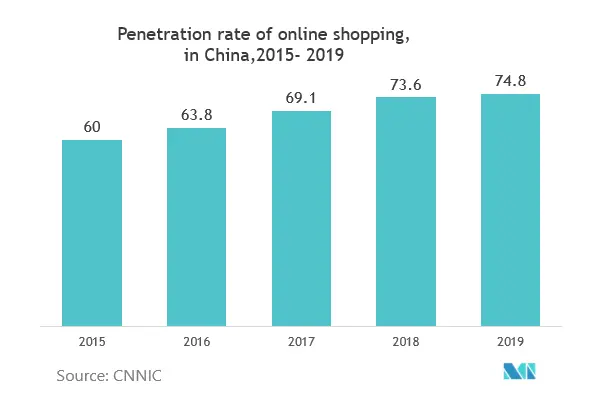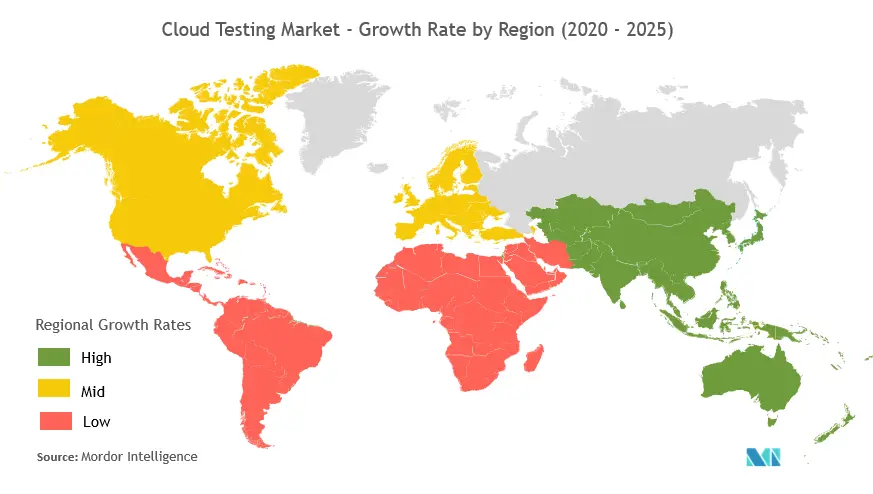Market Trends of Cloud Testing Industry
This section covers the major market trends shaping the Cloud Testing Market according to our research experts:
Websites and Applications Load Testing Boosting IT and Telecom End-user Industry
- With the help of cloud testing, IT & telecom organizations can gain quick feedback on the mainframe, and supercharge innovation without having the risk of bottlenecks that disrupt operations, hinder customer experiences or impact enterprise’s revenues. The enterprises can improve quality, velocity, and efficiency on the mainframe while lowering the problems of the shortage of experienced developers.
- At the end of 2018, Microsoft stated that Visual Studio 2019 is the last version with load testing features. A few months later they formally announced that Azure load testing is closing down on March 31st, 2020. Following the announcement, a large number of users, who were doing performance testing with Visual Studio or Azure DevOps, have been asking questions about many company’s load testing platform. K6.io has launched k6 OSS and k6 Cloud as a solution of the problem. The user can install k6 and start running performance tests in their machine for free. By default, k6 prints the result of the test to the console. The company also provide k6 Cloud load testing service as a complement to the open-source k6 tool, which will further improving their experience.
- In October 2020, AWS has introduced distributed load testing v1.1. The Distributed Load Testing on AWS helps the user easily simulate thousands of users connecting to their application so that users can better understand the application performance under load. The solution launches and configures containers on AWS Fargate to generate a specified number of transactions per second without having to provision servers.
- For the past two years, telecom companies have been onboarding network service providers to ensure the robust delivery of services. For instance, in March 2020, Ericsson was chosen by NTT DOCOMO as the AI-powered optimization solution supplier for its radio access network (RAN). Ericsson’s solution maximizes end-user experience in service provider’s networks while minimizing their total cost of ownership. The increasing adoption of such AI-enabled solutions for the development of the systems and networks boosts the growth of performance and load testing solutions in the telecom sector.

North America is Expected to Hold a Major Share
- North America is expected to hold the major share of cloud testing market owing to high adoption of cloud technology by end-user industries such as BFSI, healthcare, and retail and e-commerce among others in the region. For instance, the emergence of omnichannel banking services and the widespread digitalization across the banking sector are boosting the adoption of cloud testing services in the BFSI sector in the region.
- The region is the most mature market in terms of cloud computing services adoption, due to factors such as the presence of many enterprises with advanced IT infrastructure, and availability of technical expertise.
- Moreover, the region has a strong foothold of cloud testing vendors which contributes to the growth of the market. Some of them include IBM Corporation, Oracle Corporation, SOASTA Inc. (Akamai Technologies Inc.), and Microsoft Corporation among others. The growing collaborative efforts between companies to develop new and innovative solutions will augment the market's growth.
- The cloud-based applications are broadly witnessing demand from the QA and test teams in the region. The strong financial caliber has led to the flow of investments into enhanced testing tools and technologies.
- Furthermore, the advent of BYOD policies is also boosting the use of cloud testing solutions among enterprises. For instance, A survey by Cisco reported that 69% of the IT decision makers favor BYOD as an optimistic addition to workplace policy as it saves workers time. In the United States IT sector, it was estimated that in the past three years, BYOD adoption witnessed an increase of 44.42%.


